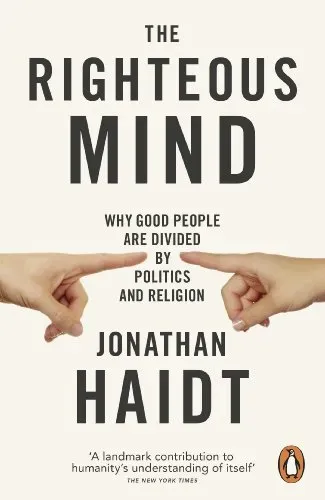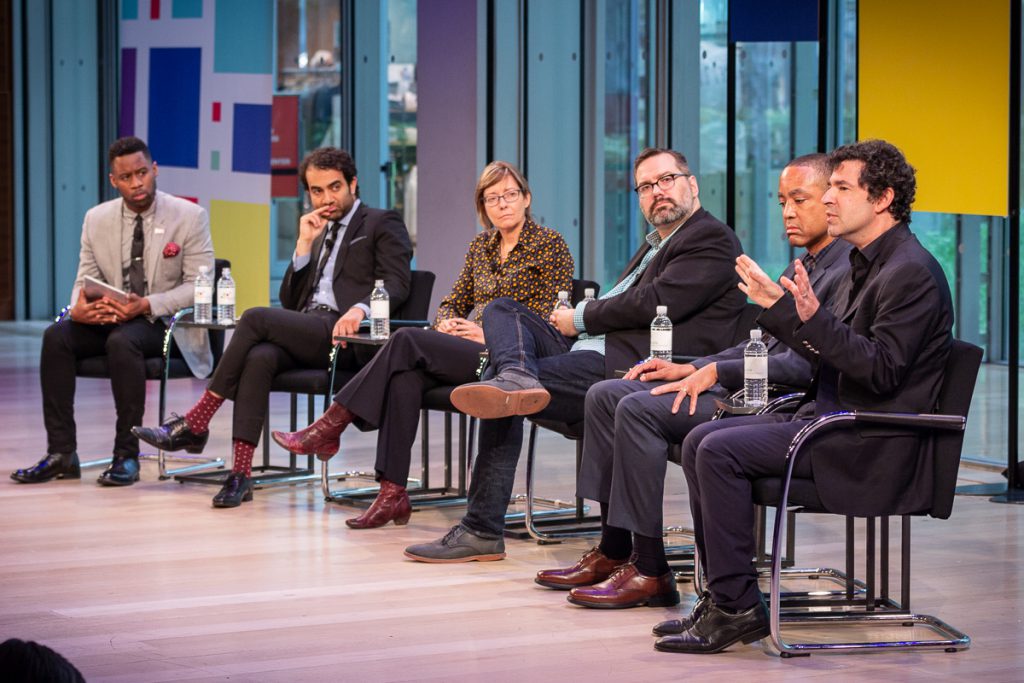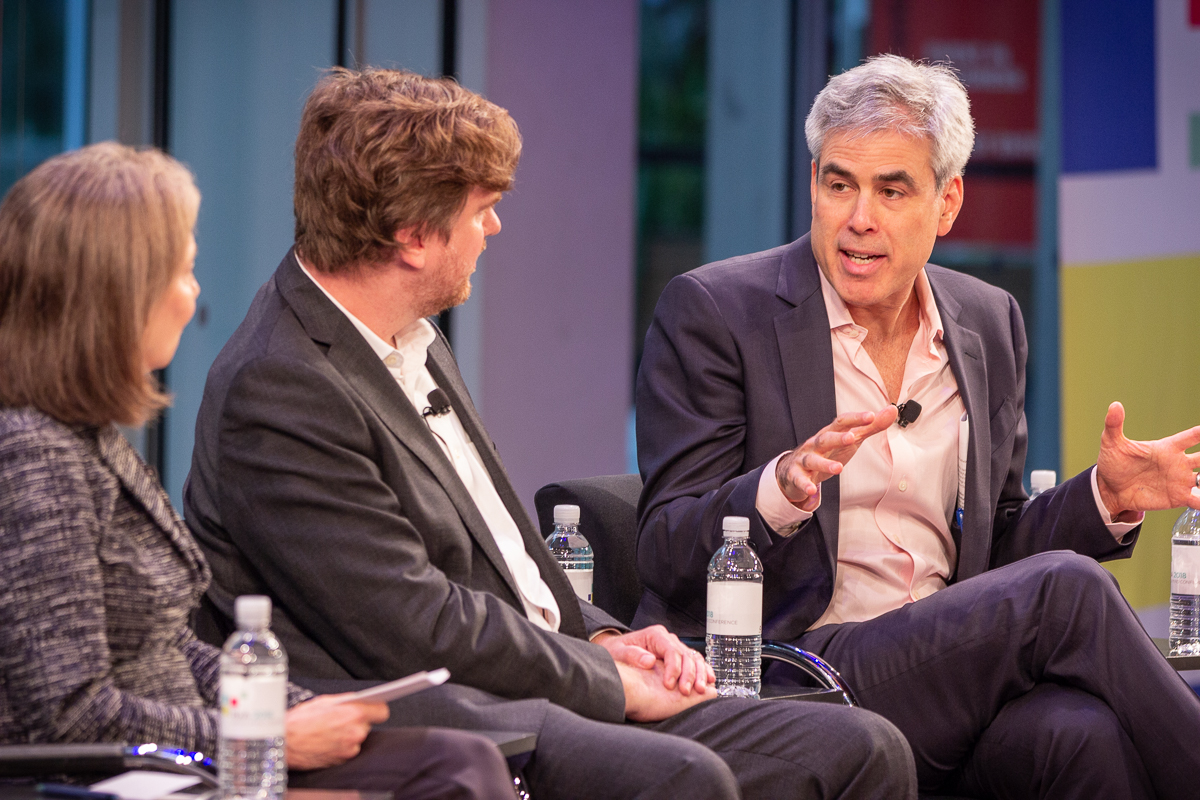Education
Heterodoxy is Hard, Even at Heterodox Academy
Heterodox Academy meeting is any indication, heterodox thinking poses substantially more problems than even the hardworking leaders of Heterodox Academy realized.

Heterodox thinking requires room to be made for different views, different ideas, and different voices to be heard. With sufficient heterodox thinking, it is hoped, the bonds that blind and bind people into groups of tribal moral warriors might wither and eventually allow for truth to replace ideology. However, if the first Heterodox Academy meeting is any indication, heterodox thinking poses substantially more problems than even the hardworking leaders of Heterodox Academy realized.
Entering the meeting I was immediately struck by the fact it was held in the New York Times conference center—a beautiful area replete with wait staff, security, and a professional grade lighting and recording area. Everything was well orchestrated, professional, and deliberate. And as Jonathan Haidt took the stage, I felt a sense of respect for a man who has not only deepened our understanding of humanity but who has also worked diligently to make Heterodox Academy a reality. He has, in many ways and sometimes against scathing criticism, popularized the idea of intellectual diversity—making the case that people like me, who do not share politically progressive ideals, are also worthy of intellectual respect. His has been a voice of reason, calm, and dignity in a sea storm of increasingly vitriolic rhetoric in academia against conservatives, classical liberals, and libertarians.

Tribal moral communities, Haidt has argued, emerge organically when individuals realize their shared interests, their common views, and their overlapping values. These communities, synthesized and energized by their shared moral intuitions, will identify and elevate certain narratives, specific beliefs, and various symbols that define the social and psychological boundaries of the group. In Haidt’s language, tribal moral communities “sacralize” objects and ideas, making them taboo for members to challenge and generating a clarion call to arms if attacked. When embraced, these sacred values bind members of the group together—they offer safety in numbers, psychological and emotional security, and the reassuring knowledge that group members and their sacred values are moral and that outsiders and their values are not. But these values also blind people to their biases and to the inconsistencies in their narratives and beliefs. The benefits of belonging to a tribal moral community therefore come at the cost of intellectual independence—that is, conformity to the moral orthodoxy of the group. Most of us, most of the time, it appears, are happy to accept this trade-off.
Haidt’s description of a tribal moral community can be applied to a broad range of groups and, in many ways, it helps us to understand how the groups we belong to normalize our vices and prejudices. Similar bodies of research in the cognitive sciences confirm this. One study after another shows that we are not only blind to our biases but that we will expend substantial cognitive energy to maintain our sacralized values and beliefs. And nobody escapes these human conditions, not even the highly educated or the intellectually gifted. To the contrary, higher levels of education and intelligence usually indicate more refined and motivated cognitive biases, more thoroughly saturated in moral overtones.
It’s against this backdrop that Heterodox Academy came into existence, promising to serve as an important corrective to the tribal moral instincts of a group certain of their knowledge and their intellectual superiority. University professors, you see, have all of the trappings of a tribal moral community. They share a common socio-moral identity, they are often oblivious to their own biases, they hold various narratives and beliefs to be sacred, and—as recent events have demonstrated—they will denounce and attack heretics without mercy. If tribal communities create homogenous thinking, Haidt reasoned, then the antidote is heterodox thinking.
Perusing the panelists, however, I began to suspect that this moment in heterodox history might be less than I had hoped. The panelists had impeccable educational credentials; they had all achieved remarkable levels of intellectual recognition, and virtually all of them came from elite universities. Harvard, Yale, Columbia, Princeton, and New York University, to name a few, were all represented. Largely absent, however, were professors of equal ability from state schools, large or small. Familiarity with the political proclivities of elite university professors led me to suspect that few would have much sympathy with those on the Right. I could almost sense the presence of a tribal moral community.

But I withheld my concerns and awaited the evidence, which duly arrived with the first panel. Three of the four panelists had a history of social protest: one had protested the Iraq war, another had protested the Vietnam war, and a third appeared have built an entire career around protesting. As I sat there, I recall thinking that, while these people were out building their reputations as progressive leaders, guys like me were in the military or doing the fighting. Our backgrounds were clearly very different, but in academia theirs matter much more than mine do.
That panel, and those that followed, provided several insights into the current state of higher education. Outside of a few lightly contested points, most panelists acknowledged that higher education is perilously close to losing any remaining credibility. But who is to blame for our problems? Who is to blame for the violent riots and physical attacks on professors? Who shuts down speakers and disinvites them? Who has propelled our great institutions away from truth-seeking? And, perhaps most importantly, why have they done so? Pertinent questions like these were left unexplored.
There was plenty of discussion about the changing role of parenting and how this might have produced students less capable of meeting the demands of living independently. And there was discussion about the university’s role in building resilience in students instead of focusing on perceived trauma. Many of the points made were insightful, perhaps even true, but were devoid of empirical evidence. Similarly, there was much discussion about administrators and their role in establishing a climate where civility, free speech, and the open exchange of ideas flourishes. But what we didn’t hear is what is most instructive: we didn’t hear criticism of faculty who ideologically indoctrinate students, and we didn’t hear criticism of specific disciplines, such as women’s studies, which are often at the forefront of shutting down speakers. Nor did we hear criticism of Title IX and the chill it has created, nor did we hear criticism of the leftist monoculture that permeates the academy. To his credit, John McWhorter did describe social justice idolatry as a religion that has negatively impacted higher education, but comments like his were relatively rare.
Somehow, these heterodox thinkers forgot to mention that their team has played a critical role in creating or fostering many of the protests, riots, assaults, and general campus lunacy we have witnessed over the past decade or so. Yet there was no mention of the rise of “victims” programs rooted in intersectional grievances. No mention of the impact postmodernism has had on the academy. No mention of biased research areas produced by the ideological dominance of the Left, or the fact that what now counts as research in some fields is so embarrassing that Twitter accounts mock it because faculty can’t or won’t. It’s almost as though faculty didn’t exist on university campuses. Perhaps Haidt’s theory that shared values blind people to their own biases was in full visibility onstage?

On the other hand, there was an effort to draw an equivalence between the assault on Charles Murray and another case few knew about that, well, didn’t involve anyone being pursued, stalked through the city, and assaulted. And there were the requisite negative references to President Trump and the calls to limit college speakers to those who had something intellectual to offer. The “provocateurs” of the Right, as they were called, were apparently too much to defend, even for the most ardent supporters of free speech. Similarly, a professor from Yale said that “free speech has been weaponized by the Right” in order to attack higher education and that “we” need to protect the institution.
One of Thomas Sowell’s greatest insights is that people select packages of beliefs and only rarely evaluate their beliefs independent of their other beliefs. This is why, for example, the same people who support abortion rights also support gun control. One doesn’t necessarily lead to the other, but within the context of the overall package, disparate views become correlated. So, too, do the explanations for those disparate views. If asked why a person supports gun control and abortion rights, they are likely to answer, “because I’m a progressive.” And it is here, where packages of beliefs merge with canned explanations, that panelists revealed their own biases. Other comments and narratives revealed the liberal assumptions of the panelists, which many in the audience appeared to share. And, to reiterate, although many of the comments were well argued from a position of intellectual authenticity, infrequent disagreements were a matter of degree only as liberals and progressives politely differed with one another.
In the closing panel, Haidt mentioned they were aware that of the 28 panelists, only 3 were not left of center. I appreciated his candor and I believe him when he said that Heterodox Academy will move to be more intellectually inclusive in the future. Nevertheless, as the conference drew to a close, I experienced conflicting emotions. At one level, I was impressed by the event, happy to have attended, and proud to be a member of Heterodox Academy. But, on a more personal level, I felt angry and even resentful. Heterodox Academy is the only organization promoting intellectual diversity in the academy and openly supportive of scholars across the political spectrum, including conservatives such as myself. Nevertheless, hardly any of my views, concerns, or experiences were represented or expressed. I suppose that I naïvely expected some degree of intellectual balance would have been sought or that the common narratives of the Left might be challenged. Maybe I was simply too optimistic, but I deeply wanted to attend an event that was truly intellectually diverse—that is, where heterodox thinking was not only encouraged but also demonstrated.
These fleeting emotions have since passed and what has emerged in their place is a greater awareness of the problems that inevitably accompany efforts at elevating heterodox thinking within the academy. The numeric imbalances between liberal and conservative faculty are, by any measure, immense. The Left virtually owns the institution and a fair number of professors in the humanities and social sciences view conservatives with open contempt. Indeed, Heterodox Academy has been repeatedly attacked by leftist academics who accuse it of being a shelter for conservative saboteurs whose true intent is to poison the academy with their rancid ideology. Other critics have been even less gracious.
This places the leaders of Heterodox Academy in a difficult position. On the one hand, if they want to grow the Academy they will need to reach more faculty. This, in turn, means they will have to appeal to those on the Left—the group most suspicious of or antagonistic to Heterodox Academy’s mission. On the other hand, these efforts may in turn alienate faculty in the center or on the Right. There is no simple answer to this conundrum, but I suspect one strategy will be to reassure academia that Heterodox Academy is not a right-wing organization. It can do this is by strategically elevating leftist faculty and their concerns and temporarily de-emphasizing the role of non-leftist faculty. In the political world that is higher education, the necessity for trade-offs will always hamper our best intentions.
As Heterodox Academy moves forward, it will become ever more important to foster relationships between academics of diverse backgrounds and politics. It will be these relationships that will eventually alter the climate of intolerance that has swept across our institutions and it will be these relationships that erode the bonds that form the backbone of the professorial tribal moral community. Trade-offs will have to be made and these trade-offs will leave Heterodox Academy open to criticism from both sides. If, however, we reduce Heterodox Academy to a set of purity tests or allow our tribal instincts to dominate our motives, then the great experiment will fail and higher education will be worse off. I, for one, remain committed to Heterodox Academy and believe wholeheartedly in its mission. Today, however, I’m also more aware that it’s difficult to be heterodox, even for Heterodox Academy.






